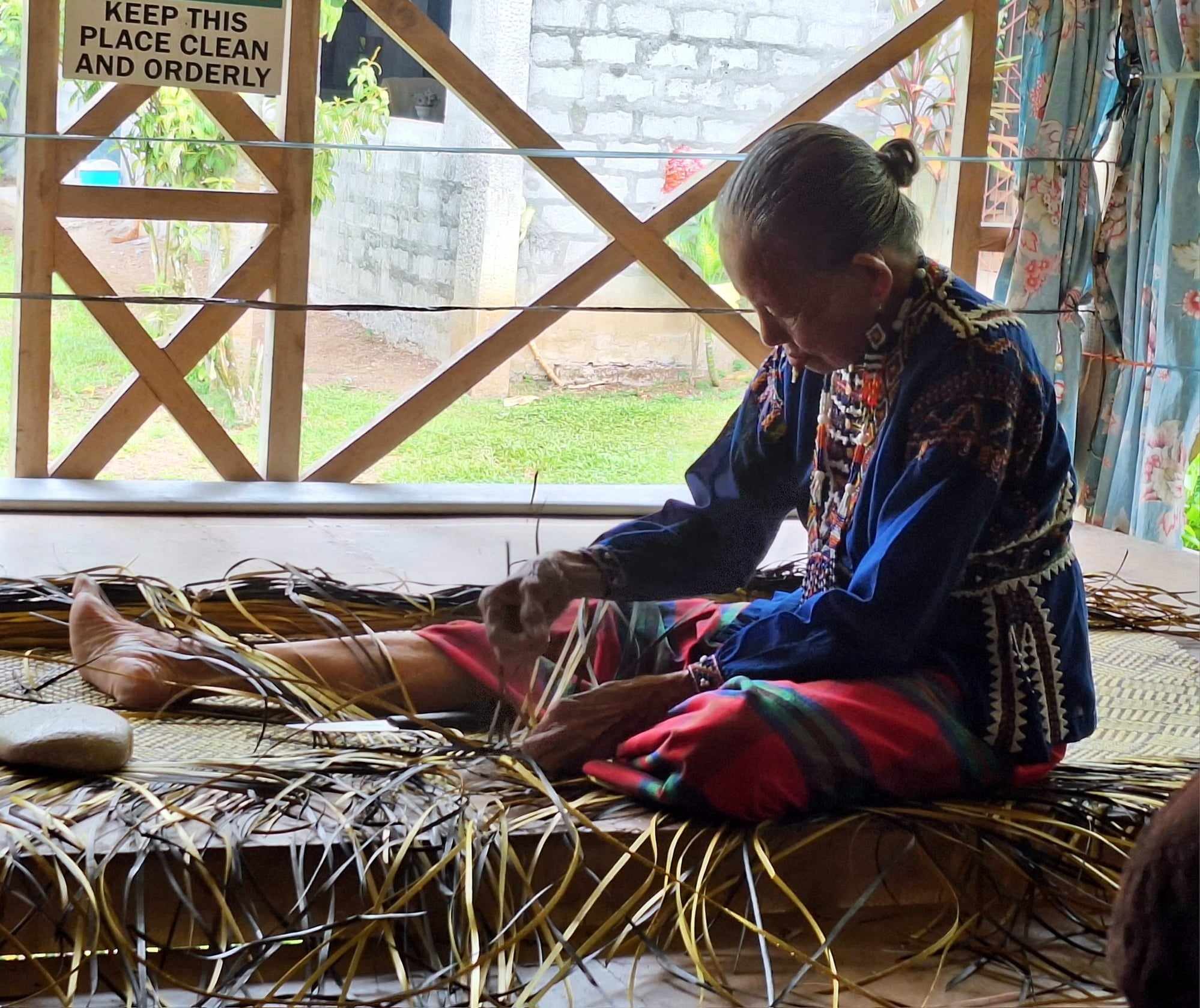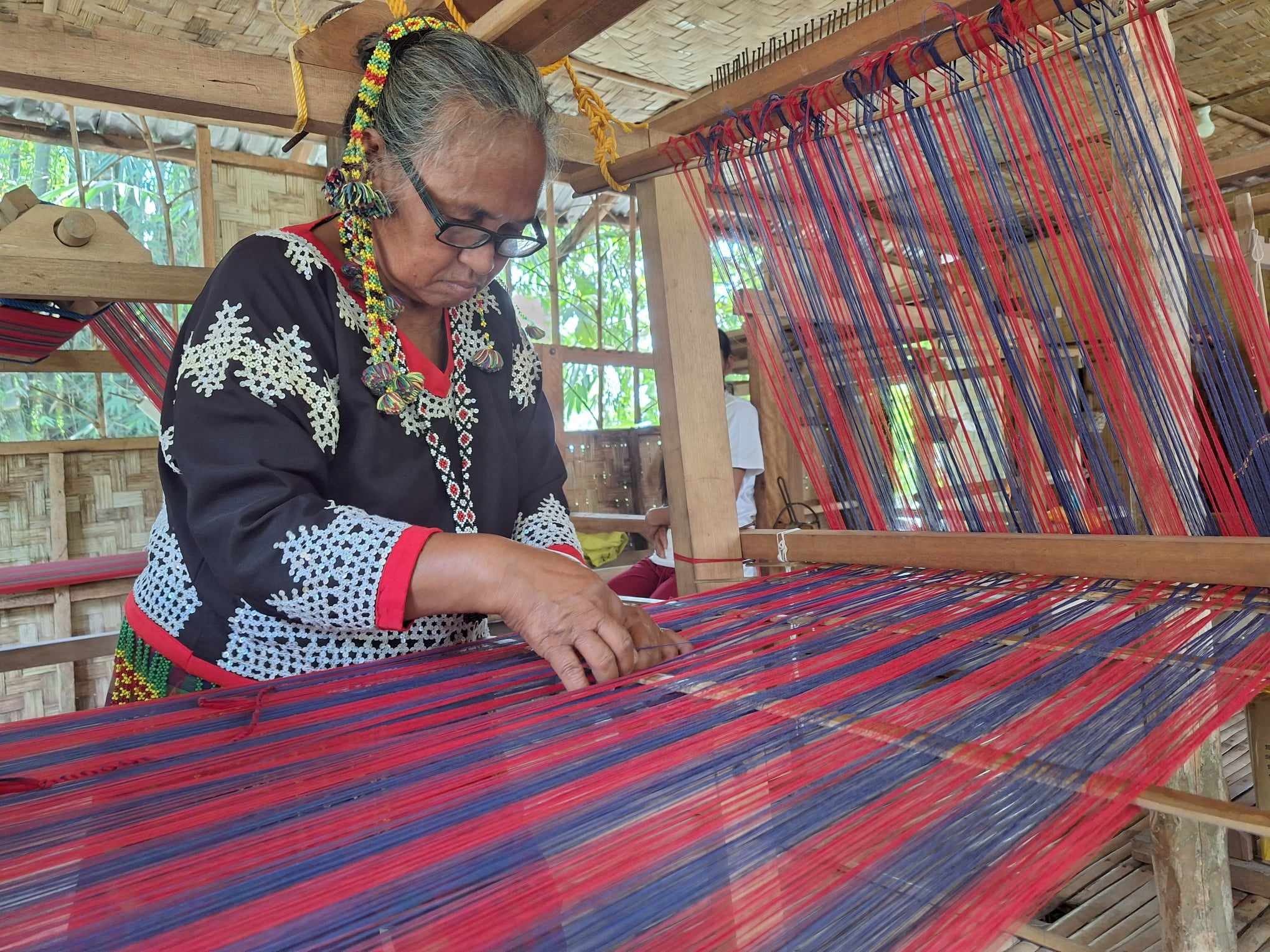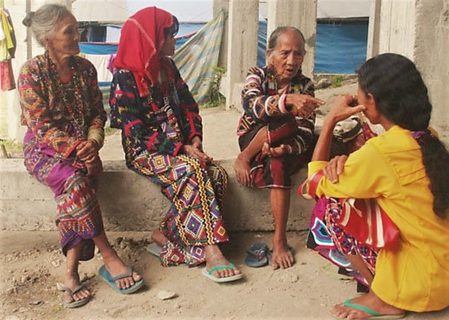SUMMARY
This is AI generated summarization, which may have errors. For context, always refer to the full article.

SARANGANI, Philippines – Fourteen-year-old Jabe is one of several young Blaans who have taken an interest in the Blaan tradition of cloth and mat weaving while their elders and their tribe are confronted by the relentless advance of modernity as they try to safeguard time-honored practices.
Instead of keeping their fingers busy with gadgets and social media, as most young people do, Jabe spends hours interlacing colorful dried Romblon leaves to create intricate designs and patterns for placemats.
Romblon is a type of screw pine that thrives in abundance in the mountain-side village of Upper Lasang in Sapu Masla, Malapatan town, Sarangani province. The plant has sword-shaped leaves that are carefully dried to prevent them from becoming brittle.
Jabe said she earns P120 for each placemat she makes. She can only make one a day during school days but can make more during weekends and when school is off.
She, however, said that she’s doing it not just for the money.
“We need to learn and become skilled weavers so that we can pass this knowledge on to the younger generation,” Jabe said.

Just like her best friend Jabe, 14-year-old Kylee Ybone uses her time to learn the art of weaving thinned and dyed Romblon leaves.
She learns the art from Jabe’s great-grandmother, 83-year-old Estelita Bantilan, who is considered a living treasure in their community for her unique talent as a master weaver.
Bantilan has been conferred with the coveted Gawad sa Manlilikha ng Bayan Award (Gamaba) in 2016. Gamaba is a version of the National Artist Award in traditional arts, according to the National Commission for Culture and the Arts (NCCA).
Speaking in Blaan, Bantilan, who learned the craft from her elders when she was still a child, said to intricately work on the thin leaves, producing colorful patterns and designs, a weaver needs plenty of patience, determination, and quick thinking.
“Pursuing a pattern and design requires a mathematical mind and quick decision on where to interlace the dried leaves of different colors,” she said.
Without these abilities, it would take a longer time to finish a Blaan-made mat, she added.
It takes Bantilan at least a month to complete weaving a mat.
The NCCA helped Bantilan put up a weaving center in their village, which she said is not much about earning but to preserve and sustain their tribe’s weaving tradition.
Bantilan, who is referred to in their village as a princess, said she keeps on weaving not only to earn from it but to encourage and teach the young the importance of preserving their tradition.

In Lamlifew, seen as a living hinterland village museum in Datal Tampal, Malungon town, Sarangani province, a collective of women cloth weavers has partnered with a public school to provide a platform for them to impart their old art of traditional weaving to the younger generation.
Rebecca Ayao, 60, the head of the association, said they started the idea of imparting the weaving skills to interested people a decade ago and had taught many of the young villagers about how to weave traditionally.
The lure of modernity in the lowlands, however, continues to attract young Blaans as they attend school or find jobs in the urban centers. She and other Blaan women said they were worried that the art would soon be lost as a result.
“We can only hope that they will be able to impart the skills and knowledge they learned and be able to share it with the coming generations,” Ayao said. – Rappler.com
Add a comment
How does this make you feel?


















There are no comments yet. Add your comment to start the conversation.